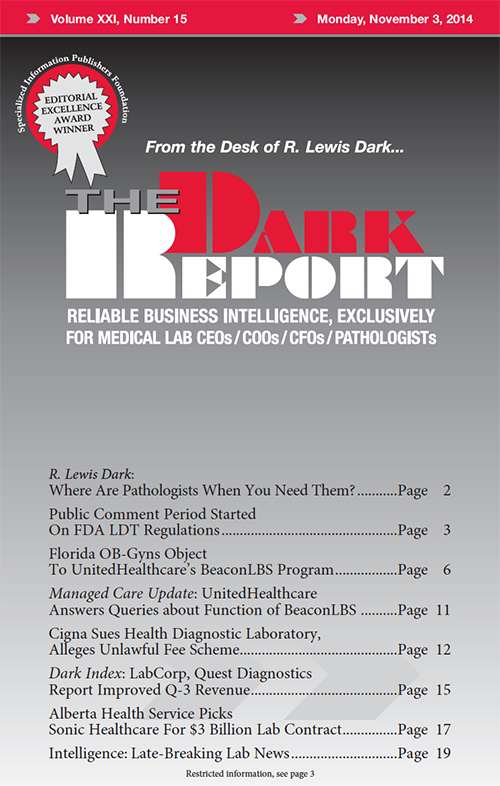CEO SUMMARY: For more than a year, Alberta’s C$3 billion RFP to develop an integrated laboratory testing service for Edmonton and surrounding regions has been the focus of intense interest. On October 17, health officials announced that Sonic Healthcare Limited was the preferred proponent. The two parties will now enter into negotiations to finalize an …
Alberta Picks Sonic Health for $3 Billion Lab Contract Read More »
To access this post, you must purchase The Dark Report.


